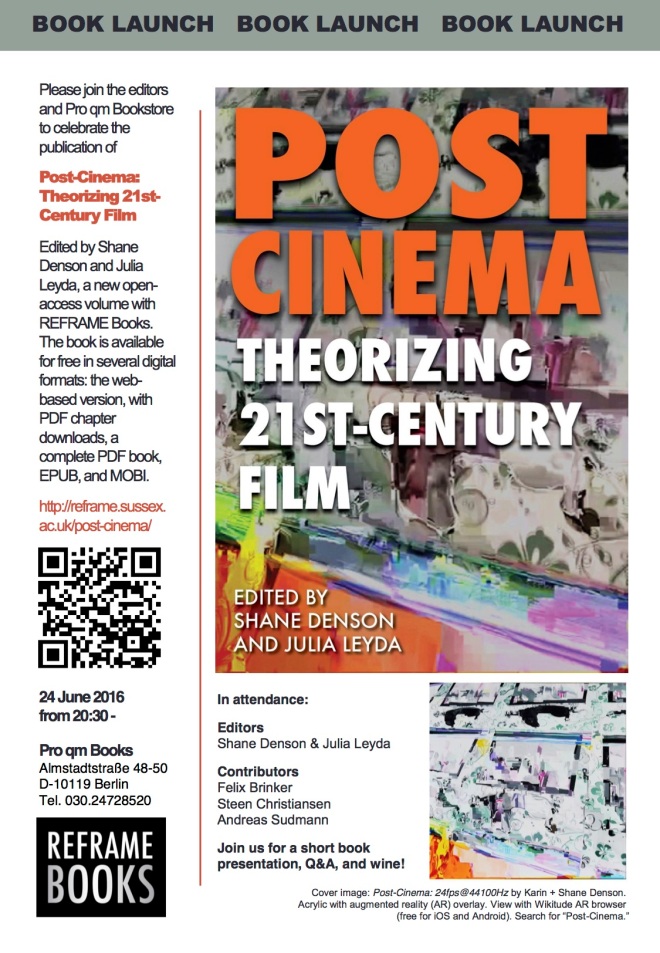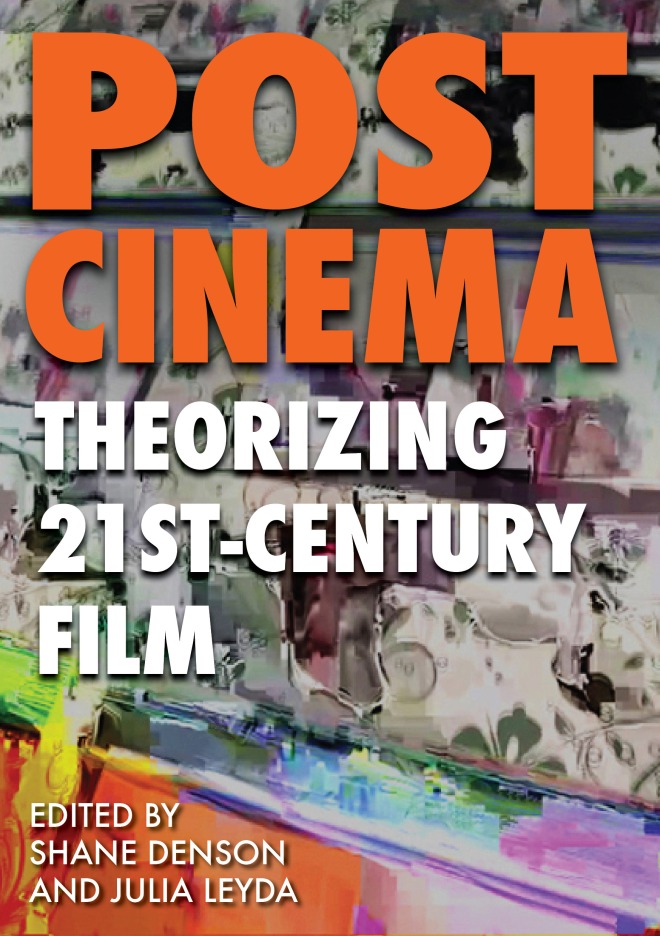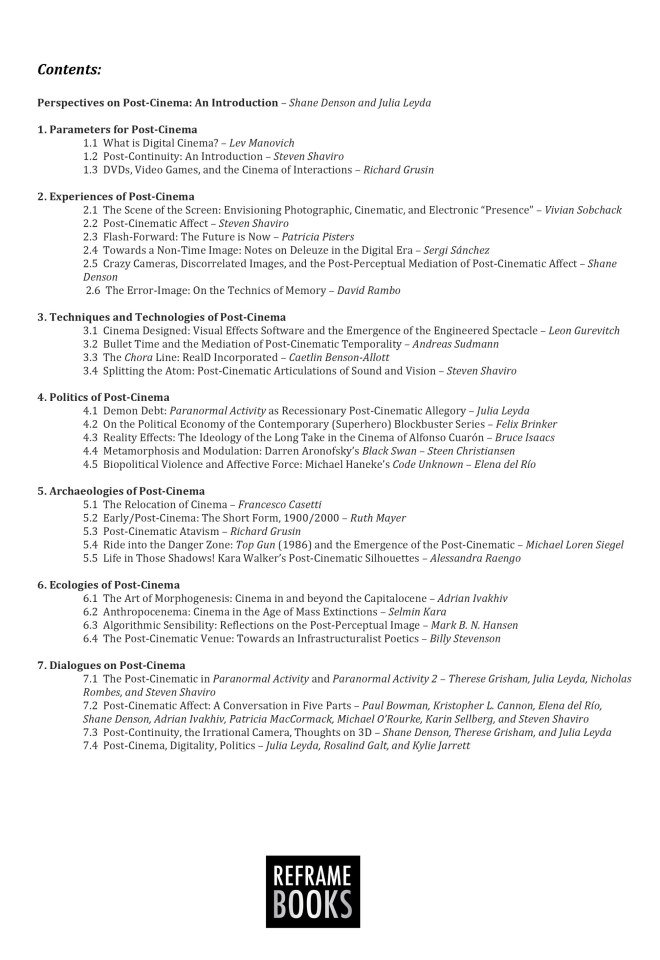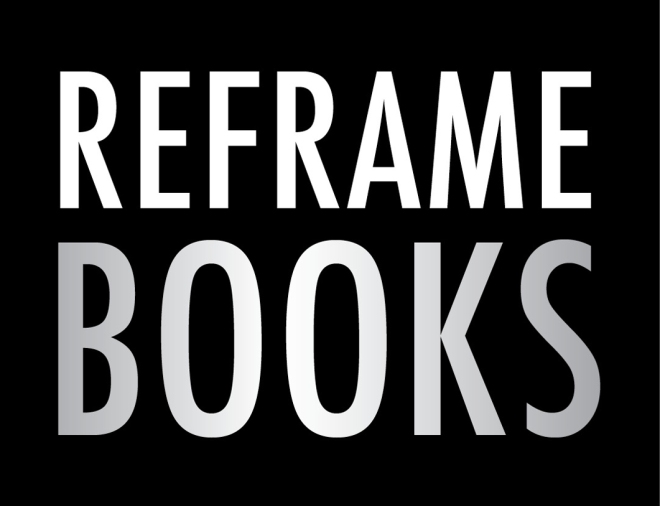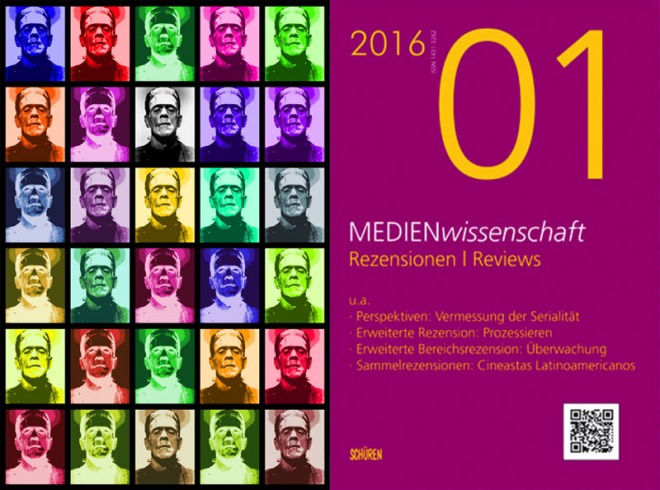On March 27, 2015, at the annual conference of the Society for Cinema and Media Studies in Montreal, Steven Shaviro, Patricia Pisters, Adrian Ivakhiv, and Mark B. N. Hansen participated in a panel I organized on “Post-Cinema and/as Speculative Media Theory.” It was standing room only, and many people were unable to squeeze into the room (some images are posted here). Thankfully, all of the presenters agreed to have their talks recorded on video and archived online.
(I have posted these videos here before, but for the sake of convenience I wanted to pull them together in a single post, so that the entire panel is available in one place.)
Above, you’ll find my brief general introduction to the panel, and below the four presentations:
Steven Shaviro’s proposal for a “Cinema 3.0”: the rhythm-image (following Deleuze’s movement-image and time-image)
Patricia Pisters, whose own proposal for a third image-type she calls the “neuro-image,” on the politics of post-cinema
Adrian Ivakhiv on the material, ecological dimensions of (post-)cinema in the Anthropocene and/or Capitalocene
Mark B. N. Hansen on the microtemporal and sub-perceptual dimensions of digital, post-cinematic images
Finally, you can look forward to hearing more from the panel participants, all of whom are contributing to an open-access collection titled Post-Cinema: Theorizing 21st-Century Film, co-edited by myself and Julia Leyda (forthcoming this year from REFRAME Books). More details soon, so stay tuned!
